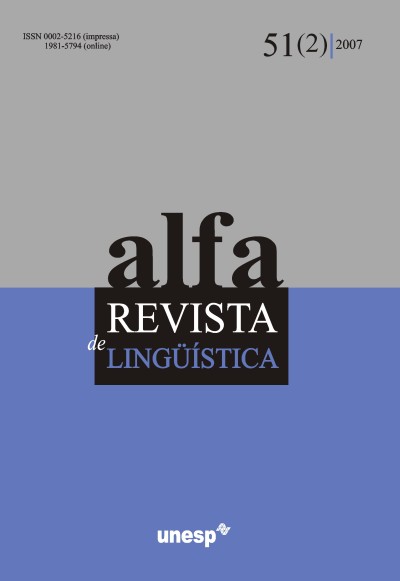The dynamic implementation of non-overt arguments in nominalizations
Palavras-chave:
Nominalization, Embedded Constructions, Valency, Overt Argument, Non-Overt Argument,Resumo
Valency is an inherent property of nominalizations representing higher-order entities, and as such it should be included in their underlying representation. On the basis of this assumption, I postulate that cases of non-overt arguments, which are very common in Brazilian Portuguese and in many other languages of the world, should be considered a special type of valency realization. This paper aims to give empirical support to this postulate by showing that non-overt arguments are both semantically and pragmatically motivated. The semantic and pragmatic motivations for non-overt arguments may be accounted for by the dynamic implementation of the FDG model. I argue that the way valency is realized by means of non-overt arguments suggests a strong parallelism between nominalizations and other types of non-finite embedded constructions – like infinitival and participial ones. By providing empirical evidence for this parallelism I arrive at the conclusion that there are at least three kinds of non-finite embedded constructions, rather than only two, as suggested by Dik (1997).
Downloads
Downloads
Publicado
Como Citar
Edição
Seção
Licença
Os manuscritos aceitos e publicados são de propriedade da Alfa: Revista de Linguística. É vedada a submissão integral ou parcial do manuscrito a qualquer outro periódico. A responsabilidade do conteúdo dos artigos é exclusiva dos autores. É vedada a tradução para outro idioma sem a autorização escrita do Editor ouvida a Comissão Editorial.

